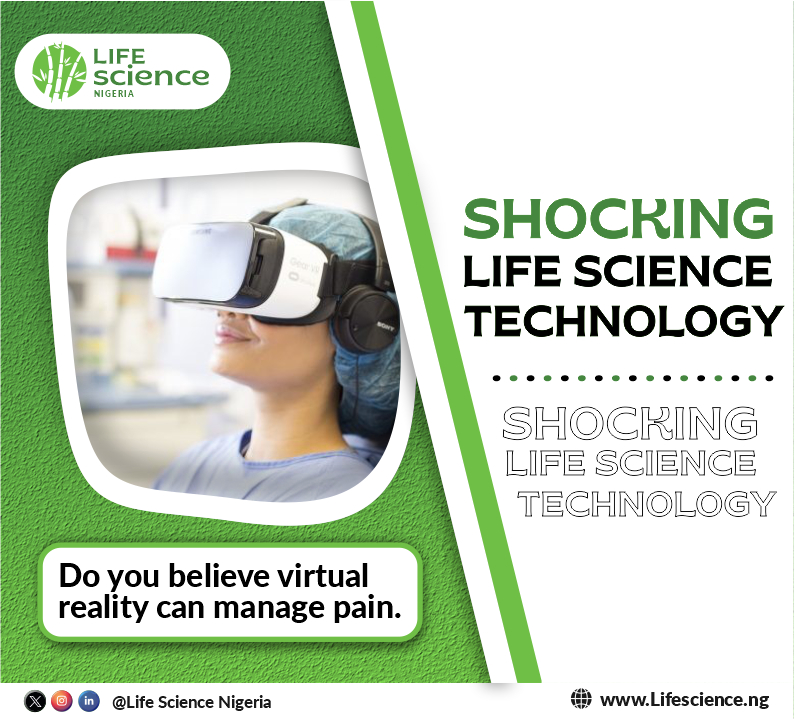
In the Life Science industries, innovation knows no bounds. From groundbreaking treatments to cutting-edge technologies, the quest to improve human health and well-being continues to push the boundaries of possibility. One such innovation that has garnered attention in recent years is the integration of virtual reality (VR) technology into pain management strategies. But can this seemingly futuristic concept truly revolutionize the way we perceive and manage pain?
Virtual reality stands as an immersive technology that transports individuals to various environments from the comfort of their homes. This innovation offers a comprehensive 360-degree view of virtual settings, enriched with tailored auditory experiences. Picture yourself under a clear blue sky amidst rolling streams and lush grassy fields, serenaded by the melodies of singing birds. Alternatively, imagine swimming alongside dolphins, witnessing awe-inspiring performances, or embarking on adventures to exotic locales. These environments can either be digitally rendered or composed of recorded footage from natural settings.
While virtual reality has gained considerable traction in the gaming industry, simulating experiences relating to amusement parks, its applications extend far beyond entertainment. In healthcare, VR serves a different purpose, aiming to soothe rather than excite individuals. Within the medical domain, virtual reality emerges as a tool for alleviating phobias, reducing anxiety, and managing pain.
The integration of virtual reality into pain management strategies relies on several techniques which include the following;
• Mindfulness: Encouraging individuals to remain present and attentive to their sensations, thoughts, and surroundings.
• Meditation and Breathing Exercises: Guiding patients through relaxation techniques to promote calmness and alleviate tension.
▪️Cognitive Behavioral Therapy: Employing narrative techniques where patients are directed to focus on positive thoughts and emotions.
• Influencing Mood: Employing virtual environments and experiences to induce positive emotions and mitigate stress, anxiety, and depression often associated with pain.
• Distraction Techniques: Engaging the brain with external stimuli to divert attention away from pain perception, thereby fostering a sense of relief.
By combining these techniques, virtual reality serves as a promising avenue for enhancing pain management protocols. Through targeted interventions, VR not only offers a temporary reprieve from discomfort but also empowers individuals to cultivate a more positive and resilient mindset in their journey toward wellness.
Can virtual reality help to manage pain?
Virtual reality (VR) has shown promise in managing pain through distraction techniques, immersive experiences, and therapeutic interventions. Numerous studies have demonstrated its potential effectiveness in alleviating various types of pain, including acute procedural pain, chronic pain conditions, and postoperative discomfort.
The principle behind using Virtual Reality for pain management lies in its ability to divert attention away from painful stimuli by immersing individuals in captivating virtual environments. By engaging multiple sensory modalities, such as sight, sound, and sometimes touch, VR can effectively reduce the perception of pain and improve overall comfort levels.
While VR holds promise as a complementary tool in pain management, it’s important to note that it may not be suitable for everyone or every type of pain. Additionally, further research is needed to optimize VR interventions, identify the most effective applications, and ensure accessibility for diverse patient populations.
Ultimately, the effectiveness of virtual reality in managing pain may vary depending on individual factors, the specific context of use, and the integration of VR with other pain management approaches. Therefore, while VR shows potential, it should be considered as part of a comprehensive pain management plan tailored to each individual’s needs and preferences.
Virtual Reality therapy is not like teletherapy, it goes beyond Zoom meetings and immerses patients in a virtual world. However, VR therapy involves a trained therapist who controls the use of the technology during treatment.
Cases using VR during treatment include:
• Pain management
• Muscle control
• Eating disorders
• Phobias and social anxiety
• Parkinson’s disease
• Autism
• Stroke
In pain management, Virtual Reality (VR) emerges as a revolutionary tool, aiming to redefine our perception of discomfort. At its essence, VR’s primary objective is clear: to diminish the intensity of pain by engaging the mind in a captivating digital experience. Through its immersive nature, VR surpasses traditional distraction methods, effectively capturing the patient’s attention and transporting them to a realm where pain holds less sway. This active diversion not only offers temporary respite but also opens pathways for exploring new avenues of relief beyond conventional treatments.
The effectiveness of VR lies in its ability to navigate the intricate pathways of pain signaling within the nervous system. The theory of “gate control” presents a compelling explanation: by overwhelming the senses with non-painful stimuli, VR effectively blocks the transmission of pain signals, preventing them from reaching the brain and thus reducing the sensation of discomfort. This nuanced understanding underscores VR’s potential as not just a distraction but a strategic intervention in the battle against pain.
However, VR for pain management isn’t without its challenges. Motion sickness, nausea, and dizziness may pose hurdles along the way, requiring careful consideration and mitigation strategies. Yet, despite these obstacles, VR stands as a beacon of hope, offering a complementary or alternative approach to traditional pharmacological treatments like opioids. As research continues to unravel its potential, VR holds promise as a transformative force in alleviating various types of pain, heralding a new era of therapeutic possibilities.
ALSO READ; SCIENTIFIC PAPERS- 5 TIPS FOR MORE IMPACTFUL WRITING.